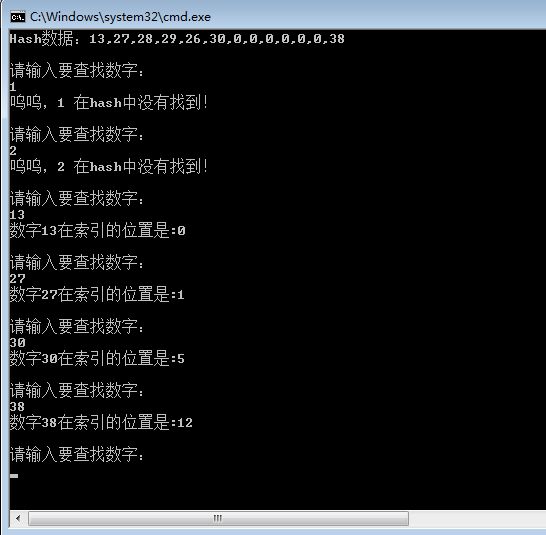Algorithms Series 15 Days Quick - Fifth Date Five Classic Search
Hash Search:
Yeah, he's hash lookup. When it comes to hash, you must mention hash functions. Ha-ha, this thing has already formed in our minds.
Inherent thinking. You must know the corresponding relationship in Hash.
For example, "5" is a number to be saved, and then I throw it to the hash function, which returns me a "2", then the "5" at this time.“
And "2" to establish a corresponding relationship, this relationship is the so-called "hash relationship", in practical applications also formed "2" is key, "5" is value.
Then some friends will ask how to do hashing. First of all, to do hashing must abide by two principles:
(1) Keys are as dispersed as possible, that is, I throw a "6" and "5" to you, and you return a "2", so the hash function is not perfect.
(2) Hash function is as simple as possible, that is to say, throw a "6" to you, and your hash function will take an hour to give me, which is not good.
In fact, there are five ways to do hash:
The first one is "direct address method".
It's easy to understand that key=Value+C; this "C" is a constant. Value+C is actually a simple hash function.
The second one is "dividing to get the remainder".
It's easy to understand, key=value%C; the explanation is the same as above.
The third is "digital analysis".
This is interesting, for example, a set of values 1 = 112233, 2 = 112633, and 3 = 119033.
For such numbers, we analyze the fluctuation of the two numbers in the middle, while the others remain unchanged. So we can take the value of the key.
key1=22,key2=26,key3=90.
The fourth one is "the square is in the middle". Ignore here. See fame.
The fifth is folding method.
This is interesting, for example, value=135790, requiring key to be a hash value of two digits. Then we change value to 13 + 57 + 90 = 160.
Then remove the high "1" and then key=60, haha, that's their hash relationship. The purpose of doing this is that key and every value are alike.
Close, to achieve the "hash address" as scattered as possible.
So-called often walking by the river, there are no wet shoes. Hash is the same. The design of your hash function is so good that it will hit the building one time or another. So the question thrown to us is
That is, if we resolve the hash address conflict.
In fact, there are also two common ways to resolve conflicts:
The first is "Open Address Method".
The so-called "open address" is actually an unused address in an array. That is to say, where a conflict occurs, the element that comes next (in two ways)
Linear detection and function detection) Look for the "open address" after the array and insert themselves into it.
The second is "link method".
It doesn't matter if you don't understand this for a while, so I'll introduce the principle of putting a pointer field on each element, where conflicts occur, and then the one that follows.
When an element throws its own data domain to the element in conflict, a list is formed where the conflict occurs.
There is so much verbosity above, that is to say, I want you to have some reference and means in the two aspects of "designing hash" and "resolving conflict".
So here's the code.
The design function adopts "dividing and residual method".
In the aspect of conflict, the method of "open address linear detection" is adopted.
Result:

Index lookup:
When referring to "index", we estimate that the first reaction is "database index". Right, in fact, the primary key to establish "index" is to facilitate our search in massive data.
As for the knowledge of indexing, it is estimated that everyone knows better than I do. I'll give you a brief introduction.
We write our own algorithms to implement the three terms commonly used in index lookup:
First: main table, this is very simple, to find the object.
Second: Index items. Generally, we use functions to divide a main table into several sub-tables. Each sub-table establishes an index. This index is called index items.
Third: Index table, the collection of index items is index table.
Generally, "index item" contains three contents: index, start, length.
First: index, which is the key word that the index points to the main table.
Second: start, which is the location of index in the main table.
Third: length, which is the interval length of a subtable.
Result:

ps: Hash lookup time complexity O(1).
Index lookup time complexity: In the case of Demo above, it is equal to O(n/3)+O(length)
